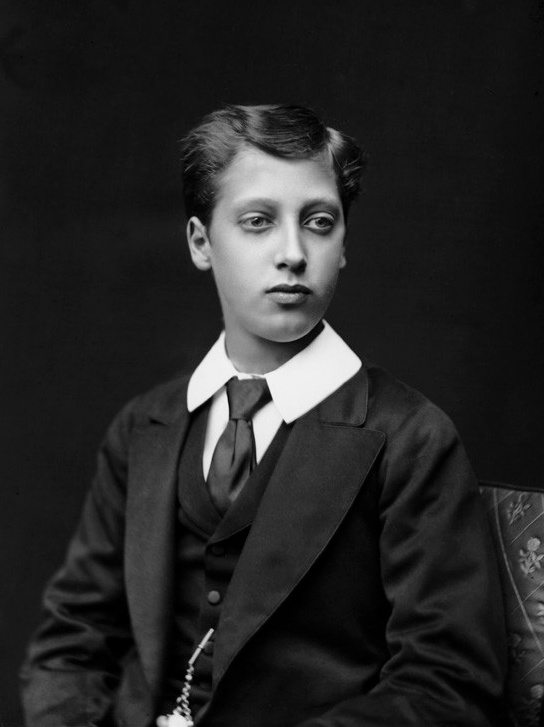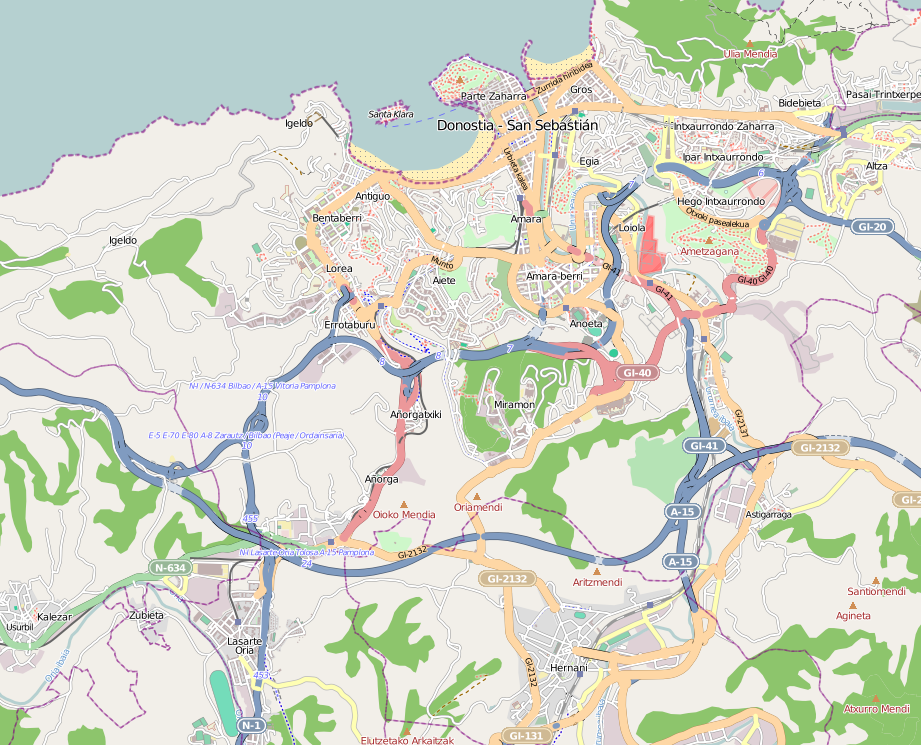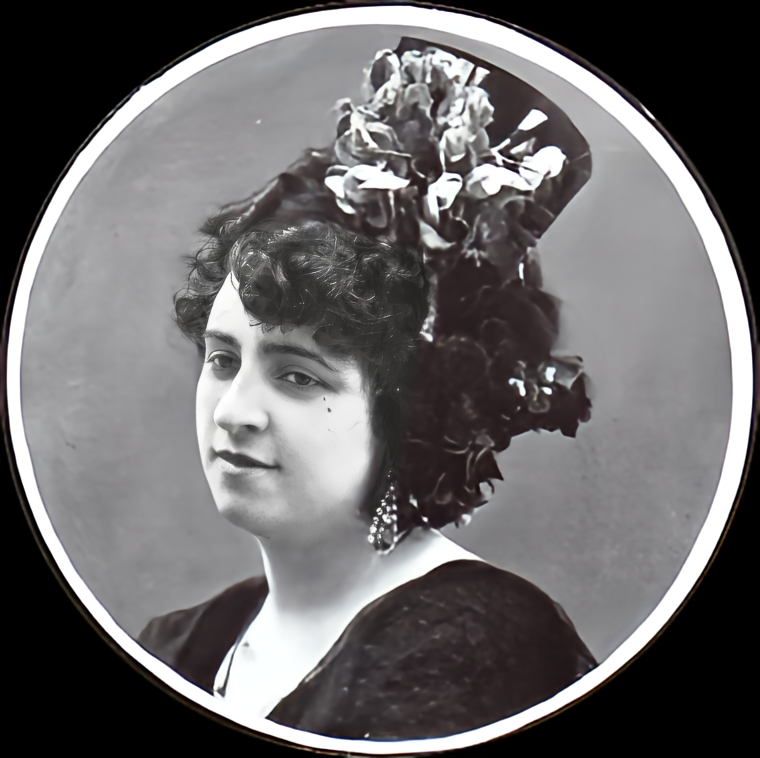|
ûlvaro De Figueroa, 1st Count Of Romanones
ûlvaro de Figueroa y Torres-Sotomayor, 1st Count of Romanones (9 August 1863 ã 11 October 1950) was a Spanish politician and businessman. He served as Prime Minister three times between 1912 and 1918, president of the Senate, president of the Congress of Deputies, Mayor of Madrid and many times as cabinet minister. He belonged to the Liberal Party. Romanones, who built an extensive political network, exerted a tight control on the political life of the province of Guadalajara during much of the Restoration period. He also was a prolific writer, authoring a number of history essays. Biography Early life Born on 15 August 1863 in the Casa de Cisneros, at the Madrid's Plaza de la Villa, he was son of Ignacio Figueroa y Mendieta (a millionaire who had inherited a fortune from the mining companies of his father) and Ana de Torres y Romo (an aristocrat, daughter of the Marquis of Villamejor). His siblings were Francisca, Josûˋ, Gonzalo and . When he was a child, he suffered a b ... [...More Info...] [...Related Items...] OR: [Wikipedia] [Google] [Baidu] |
Bassano Limited
Alexander Bassano (10 May 1829 ã 21 October 1913) was an English photographer who was a leading royal and high society portrait photographer in Victorian London. He is known for his photo of the Earl Kitchener in the ''Lord Kitchener Wants You'' army recruitment poster during the First World War and his photographs of Queen Victoria. Biography Alessandro Bassano was the second youngest child of Italian Clemente Bassano, originally a fishmonger of Cranbourne Street, later an oilman and warehouseman of Jermyn Street, London, and his English wife, Elizabeth Browne. He later anglicised his first name to Alexander. Bassano received early artistic training with artists Augustus Egg and William Beverley. He opened his first studio in 1850 in Regent Street. The studio then moved to Piccadilly 1859ã1863, to Pall Mall and then to 25 Old Bond Street in 1877. There was also a Bassano branch studio at 132 King's Road, Brighton from 1893 to 1899. The Old Bond Street studio was deco ... [...More Info...] [...Related Items...] OR: [Wikipedia] [Google] [Baidu] |
Restoration (Spain)
The Restoration ( es, link=no, Restauraciû°n), or Bourbon Restoration (Spanish: ''Restauraciû°n borbû°nica''), is the name given to the period that began on 29 December 1874ãafter a coup d'ûˋtat by General Arsenio MartûÙnez Campos ended the First Spanish Republic and restored the monarchy under Alfonso XIIãand ended on 14 April 1931 with the proclamation of the Second Spanish Republic. After almost a century of political instability and many civil wars, the aim of the Restoration was to create a new political system, which ensured stability by the practice of '' turnismo''. This was the deliberate rotation of the Liberal and Conservative parties in the government, often achieved through electoral fraud. Opposition to the system came from Republicans, Socialists, Anarchists, Basque and Catalan nationalists, and Carlists. Alfonso XII and the Regency of Maria Christina (1874ã1898) The '' pronunciamiento'' by MartûÙnez Campos established Alfonso XII as king, marking the e ... [...More Info...] [...Related Items...] OR: [Wikipedia] [Google] [Baidu] |
Manuel Alonso MartûÙnez
Manuel Alonso MartûÙnez (1827, Burgos – 1891, Madrid) was a Spanish jurist and politician, and the principal redactor of the Spanish Civil Code. After working as a Burgos attorney, he entered public service in 1854 as a member of the Cortes. During his political career, he served as Minister of Development, of Finance, of Grace and Justice, as governor of Madrid and as the 139th president of the Congress of Deputies The president of the Congress of Deputies ( es, Presidente del Congreso de los Diputados) is the speaker of the Congress of Deputies, the lower house of the Cortes Generales (the Spanish parliament). The president is elected among the members o .... He was instrumental in pursuing the codification of Spanish civil law. His widow, DoûÝa Demetria MartûÙn y Baraya, received in 1891 the title of Marchioness of Alonso MartûÙnez. References * 1827 births 1891 deaths People from Burgos Progressive Party (Spain) politicians Liberal Union (Spain) politi ... [...More Info...] [...Related Items...] OR: [Wikipedia] [Google] [Baidu] |
San SebastiûÀn
San Sebastian, officially known as DonostiaãSan SebastiûÀn (names in both local languages: ''Donostia'' () and ''San SebastiûÀn'' ()) is a city and Municipalities of Spain, municipality located in the Basque Country (autonomous community), Basque Autonomous Community, Spain. It lies on the coast of the Bay of Biscay, from the FranceãSpain border. The capital city of the province of Gipuzkoa, the municipality's population is 188,102 as of 2021, with its metropolitan area reaching 436,500 in 2010. Locals call themselves ''donostiarra'' (singular), both in Spanish and Basque language, Basque. It is also a part of Basque Eurocity Bayonne-San SebastiûÀn. The main economic activities are almost entirely service sector, service-based, with an emphasis on commerce and tourism, as it has long been one of the most famous tourist attraction, tourist destinations in Spain. Despite the city's small size, events such as the San SebastiûÀn International Film Festival and the San Sebastia ... [...More Info...] [...Related Items...] OR: [Wikipedia] [Google] [Baidu] |
By-election
A by-election, also known as a special election in the United States and the Philippines, a bye-election in Ireland, a bypoll in India, or a Zimni election (Urdu: ÄÑì ìÜ ÄÏìĈÄÛÄÏÄ´, supplementary election) in Pakistan, is an election used to fill an office that has become vacant between general elections. A vacancy may arise as a result of an incumbent dying or resigning, or when the incumbent becomes ineligible to continue in office (because of a recall, election or appointment to a prohibited dual mandate, criminal conviction, or failure to maintain a minimum attendance), or when an election is invalidated by voting irregularities. In some cases a vacancy may be filled without a by-election or the office may be left vacant. Origins The procedure for filling a vacant seat in the House of Commons of England was developed during the Reformation Parliament of the 16th century by Thomas Cromwell; previously a seat had remained empty upon the death of a member. Cromwell de ... [...More Info...] [...Related Items...] OR: [Wikipedia] [Google] [Baidu] |
Congress Of Deputies
The Congress of Deputies ( es, link=no, Congreso de los Diputados, italic=unset) is the lower house of the Cortes Generales, Spain's legislative branch. The Congress meets in the Palacio de las Cortes, Madrid, Palace of the Parliament () in Madrid. It has 350 members elected by constituency, constituencies (matching fifty Provinces of Spain, Spanish provinces and two Autonomous cities of Spain, autonomous cities) by closed list proportional representation using the D'Hondt method. Deputies serve four-year terms. The presiding officer is the President of the Congress of Deputies, who is elected by the members thereof. It is the analogue to a speaker. In the Congress, MPs from the List of political parties in Spain, political parties, or groups of parties, form Parliamentary group (Spain), parliamentary groups. Groups must be formed by at least 15 deputies, but a group can also be formed with only five deputies if the parties got at least 5% of the nationwide vote, or 15% of the ... [...More Info...] [...Related Items...] OR: [Wikipedia] [Google] [Baidu] |
ûlvaro De Figueroa Y Torres, Conde De Romanones
ûlvaro (, , ) is a Spanish, Galician and Portuguese male given name and surname (see Spanish naming customs) of Visigothic origin. Some claim it may be related to the Old Norse name Alfarr, formed of the elements ''alf'' "elf" and ''arr'' "warrior", but the absence of Visigothic names containing the particle "alf" or "elf" evident in Kremer's Onomastik suggests that it may come from other forms, like "all" and maybe "ward". Given name Artists *Alvaro (DJ), a DJ *ûlvaro DûÙaz GonzûÀlez (born 1972), Chilean screenwriter, producer and director *ûlvaro Guerrero, Mexican film actor *ûlvaro Guevara, Chilean painter * ûlvaro Lû°pez, British drummer *ûlvaro Morte, Spanish film actor *ûlvaro Mutis, Colombian poet, novelist, and essayist *ûlvaro Pierri, Uruguayan classical guitarist *ûlvaro Soler, Spanish singer and songwriter *ûlvaro Torres, Salvadoran singer and songwriter Politicians and statesmen *ûlvaro Alsogaray (1913 - 2005), Argentine liberal politician. *ûlvaro Arzû¤ ( ... [...More Info...] [...Related Items...] OR: [Wikipedia] [Google] [Baidu] |
Licentiate Degree
A licentiate (abbreviated Lic.) is an academic degree present in many countries, representing different educational levels. It may be similar to a master's degree when issued by pontifical universities and other universities in Europe, Latin America, and Syria. The term is also used for a person who holds this degree. Etymology The term derives from Latin ''licentia'', "freedom" (from Latin ''licáre'', "to be allowed"), which is applied in the phrases ''licentia docendi'' (also ''licentia doctorandi''), meaning "permission to teach", and ''licentia ad practicandum'' (also ''licentia practicandi''), meaning "permission to practice", signifying someone who holds a certificate of competence to practise a profession. History The Gregorian Reform of the Catholic Church led to an increased focus on the liberal arts in episcopal schools during the 11th and 12th centuries, with Pope Gregory VII ordering all bishops to make provisions for the teaching of liberal arts. Chancellors ... [...More Info...] [...Related Items...] OR: [Wikipedia] [Google] [Baidu] |
Cuplûˋ
The cuplûˋ was a popular risquûˋ Spanish theatre song style in the late years of the 19th century. From 1893ã1911 the songs were a feature of the "gûˋnero ûÙnfimo" (lowest type) cabaret theatre sung by solo female singers, or men in drag, and attended mainly by men. But in the second decade of the 20th century the cuplûˋ, in a more respectable form, became more family-friendly and was associated with the makings of stars of the Spanish theatre such as Aurora Jauffret, "La Goya".Bradley S. Epps, Despina Kakoudaki ''All about Almodû°var: A Passion for Cinema'' 2009 "Even the cuplûˋ, the song with which Montiel becomes identified, derives from a tradition of risquûˋ musical numbers filled with sexual innuendo performed by women." The term comes from French ''couplet'', but the poetic form couplet A couplet is a pair of successive lines of metre in poetry. A couplet usually consists of two successive lines that rhyme and have the same metre. A couplet may be formal (closed) ... [...More Info...] [...Related Items...] OR: [Wikipedia] [Google] [Baidu] |
Barouche
A barouche is a large, open, four-wheeled carriage, both heavy and luxurious, drawn by two horses. It was fashionable throughout the 19th century. Its body provides seats for four passengers, two back-seat passengers vis-û -vis two behind the coachman's high box-seat. A leather roof can be raised to give back-seat passengers some protection from the weather. Etymology ''Barouche'' is an anglicisation of the German word ''barutsche'', via the Italian ''baroccio'' or ''biroccio'' and ultimately from the ancient Roman Empire's Latin ''birotus'', "two-wheeled". The name thus became a misnomer, as the later form of the carriage had four wheels. Development and variations The barouche was based on an earlier style of carriage, the ''calash'' or ''calû´che'': this was a light carriage with small wheels, inside seats for four passengers, a separate driver's seat and a folding top. A folding calash top was a feature of two other types: the chaise, a two-wheeled carriage for one or two ... [...More Info...] [...Related Items...] OR: [Wikipedia] [Google] [Baidu] |
Gonzalo Figueroa Y Torres
Gonzalo Figueroa y Torres (19 August 1861 - 18 October 1921) was a Spanish politician of the Restoration, and Mayor of Madrid between 1904 and 1905. He held noble titles such as ''Count of Mejorada del Campo'' and ''Duke of Las Torres''. He is best known for being the very first Spanish representative in the International Olympic Committee and as the fundamental head behind the foundation of the Spanish Olympic Committee in 1912. Early life He was born in Madrid on 19 August 1861, as the son of Ignacio Figueroa y Mendieta, and the brother of ûlvaro (the Count of Romanones), Josûˋ Figueroa y Torres (Viscount of Irueste) and (Duke of Tovar). He was part of one of the most influential families in Spain during the Restoration period. Political career He premiered as a deputy in the Cortes for Baeza in the 1891 Spanish general election. He was senator for the province of Guadalajara in two legislatures (1896ã1898 and 1898ã1899) and, from 1899, a senator for life, holding this ... [...More Info...] [...Related Items...] OR: [Wikipedia] [Google] [Baidu] |
Josûˋ Figueroa Y Torres
Josûˋ Figueroa y Torres (8 March 1857 - 11 June 1901), also known by his noble title of Viscount of Irueste, was a Spanish politician of the Restoration. He was a football pioneer in Madrid, being the fundamental head behind the foundations of the very first legalized sports club in the country, Cricket and Football Club of Madrid in 1879, serving the entity as its first-ever president. Biography Born in Marseille on 8 March 1857, he was the son of Ignacio Figueroa y Mendieta, and the brother of ûlvaro (the Count of Romanones), Gonzalo and . He was part of one of the most influential families in Spain during the Restoration period. He was the first president of the Cricket and Football Club of Madrid, founded in 1879, the first legally registered sports society in Spain. Recent studies place it as one of the proto-clubs that pioneered and expanded football in Spain, together with Exiles Football Club (1876) and the Rio Tinto English Club (1878). It is not known with certainty ... [...More Info...] [...Related Items...] OR: [Wikipedia] [Google] [Baidu] |





